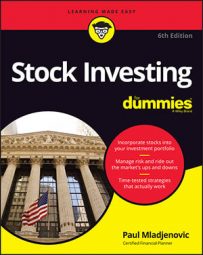A stop-loss order (also called a stop order) is a condition-related order that instructs the broker to sell a particular stock in your investment portfolio only when the stock reaches a particular price. It acts like a trigger, and the stop order converts to a market order to sell the stock immediately.
The stop-loss order isn’t designed to take advantage of small, short-term moves in the stock’s price. It’s meant to help you protect the bulk of your money when the market turns against your stock investment in a sudden manner.
Say that your Kowalski, Inc., stock rises from $10 to $20 per share and you seek to protect your investment against a possible future market decline. A stop-loss order at $18 triggers your broker to sell the stock immediately if it falls to the $18 mark. If the stock suddenly drops to $17, it still triggers the stop-loss order, but the finalized sale price is $17.
In a volatile market, you may not be able to sell at your precise stop-loss price. However, because the order automatically gets converted into a market order, the sale will be done, and you’ll be spared further declines in the stock.
The main benefit of a stop-loss order is that it prevents a major loss in a stock that you own. It’s a form of discipline that’s important in investing in order to minimize potential losses. Investors can find it agonizing to sell a stock that has fallen. If they don’t sell, however, the stock often continues to plummet as investors hope for a rebound in the price.
Most investors set a stop-loss amount at about 10 percent below the market value of the stock. This percentage gives the stock some room to fluctuate, which most stocks tend to do from day to day. If you’re extra nervous, consider a tighter stop-loss, such as 5 percent or less.
Please keep in mind that this order is a trigger and a particular price is not guaranteed to be captured because the actual buy or sell occurs immediately after the trigger is activated. If the market at the time of the actual transaction is particularly volatile, then the price realized may be significantly different.

